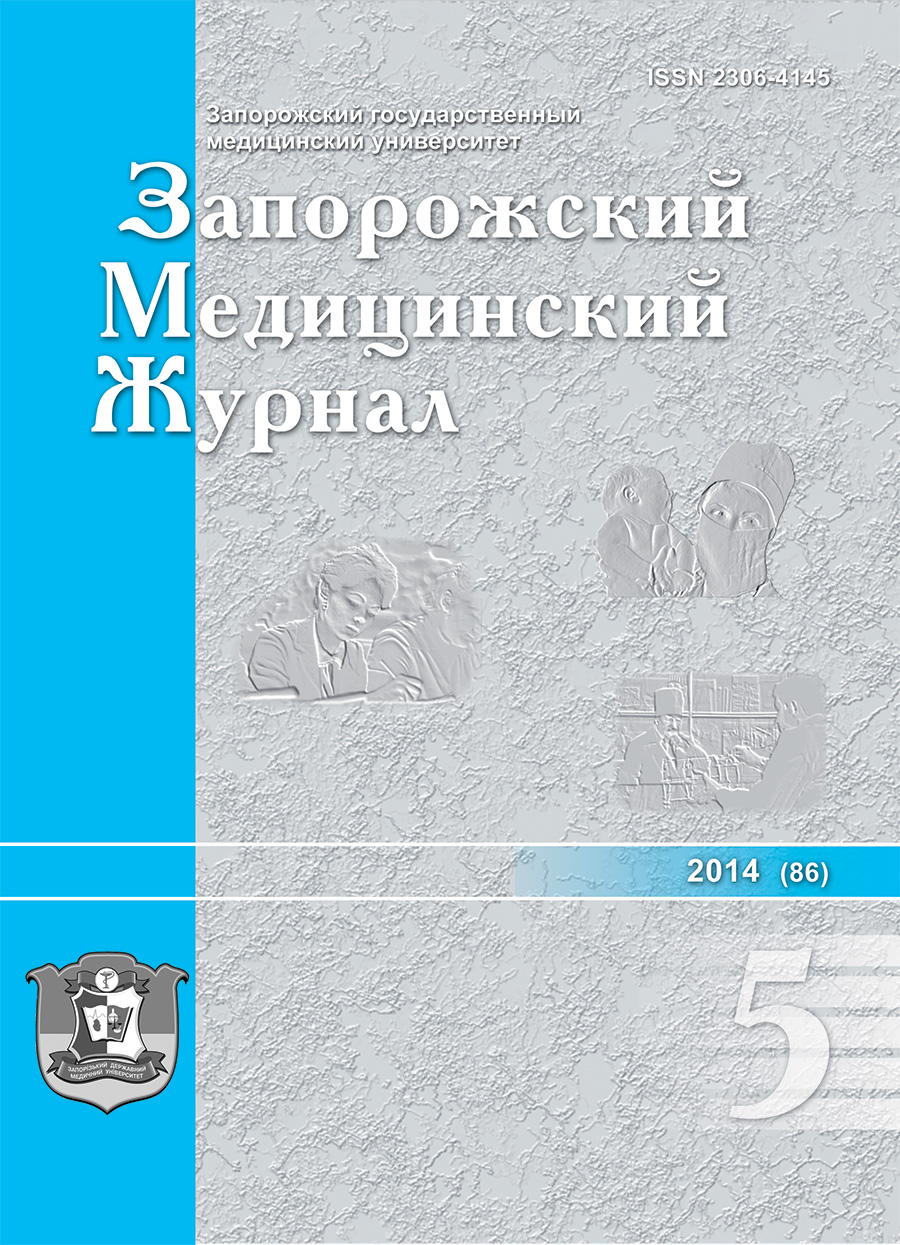Neuroprotection neurotrophic cerebroprotector Сerebroсurin in terms of modeling acute stroke
DOI:
https://doi.org/10.14739/2310-1210.2014.5.28772Keywords:
Stroke, Neuroprotection, Neurotropeptides, СerebroсurinAbstract
Aim. The high frequency of cerebral blood flow causes the relevance of further study pathogenic mechanisms of cerebral ischemia and the search and study of highly cerebroprotector. In order to obtain comparative evaluation of the safety and neuroprotective effect of the drug Сerebroсurin the dependence of the effect on the ways of administration.
Methods and results. Results of the study revealed the advantage of intrathecal route of administration before the intraperitoneal. The effect is manifested in increased survival of animals, decrease the manifestations of mitochondrial dysfunction, oxidative stress inhibition, activation of the antioxidant system in rat brain.
Conclusion. The obtained results show the effectiveness of the intrathecal route of administration Сerebroсurin in the context of an acute cerebrovascular accident.
References
Belenichev, I. F., Chekman, I. S., & Nagornaya N. A. (2014). Doklinicheskoe izuchenie specificheskoj aktivnosti e`ndotelioprotektivnykh preparatov : metodicheskie rekomendacii GE`C MZ Ukrainy [Preclinical studying of specific activity endotelioprotektivnykh of preparations: method. recommendations of GETs MZ of Ukraine]. Kyiv. [in Ukrainian].
Belenichev, I. F., Chernij, V. I., Kolesnyk, Yu. M., Pavlov, S. V., Andronova, I. A., & Abramov, A. V. (2009). Racional'naya nejroprotekciya [Rational neuroprotection], Doneck: Izdatel' Zaslavskij. [in Ukrainian].
Chekman, I. S., Belenichev, I. F., Gorchakova, N. A., Kucherenko, L. I., Bukhtiyarova, N. V., & Pogotova, G. A. (2014). Antioksidanty: kliniko-farmakologicheskie aspekty [Antioxidants: clinical and pharmacological aspects]. Ukrainskyi medychnyi chasopys, 1, 22–28. [in Ukrainian].
Gubskij, U., Belenichev, I., Levickij, E., Pavlov, S., & Gorushko, А. (2006). Mekhanizmy razvitiya kognitivnogo deficita pod dejstviem kislorodnykh radikalov v usloviyakh stressa [Mechanisms of development cognitive deficiency under action oxygen radicals in conditions of stress]. Sovremennye problemy toksikologii, 3, 8–12. [in Ukrainian].
Chekman, I. S., Belenichev, I. F., Gubskij, Yu. I., Gromov, L. A., Kolesnik, Yu. M., & Bukhtiyarova, N. V. (2010). Doklinicheskoe izuchenie specificheskoj aktivnosti potencial'nykh nejroprotektivnykh preparatov : metodicheskie rekomendacii GFC MZ Ukrainy [Preclinical study of the specific activity of potential neuroprotective drugs: method. recommendations of GFTs MZ of Ukraine]. Kyiv. [in Ukrainian].
Povarova, O. V., Kalenikova, E. I., Gorodeckaya, E. I., & Medvedev, O. S. (2003). Antioksidanty kak nejroprotektory pri ishemicheskom insul'te [Antioxidants as neuroprotectors against acute ischemic stroke]. E`ksperimental'naya i klinicheskaya farmakologiya, 66(3), 69–73. [in Russian].
Prohorova, M. I. (Ed.). (1982). Sovremennye metody biokhimicheskikh issledovanij (lipidnyj i e`nergeticheskij obmen) [Modern methods of biochemical tests (lipid and energy metabolism). Leningrad : Izd-vo Leningradskogo universiteta. [in Russian].
Stefanov, A. V. (2002). Doklinicheskie issledovaniya lekarstvennykh sredstv [Preclinical studies of drugs] Kyiv: Avicenna. [in Ukrainian].
Belenichev, I. F., Gorbacheva, S. V., Demchenko, A. V., & Bukhtiyarova N. V. (2014). The thiol-disulfide balance and the nitric oxide system in the brain tissue of rats subjected to experimental acute impairment of cerebral blood flow: The therapeutic effects of nootropic drugs. Neurochemical Journal, 8(1), 24-27. doi: 10.1134/S181971241401005X
Scott, B. & Auroma, O. (1999). Oxidative stress, oxidants and antioxidants. Exp. Physiol. 8(6), 291–295.
Downloads
How to Cite
Issue
Section
License
Authors who publish with this journal agree to the following terms:
Authors retain copyright and grant the journal right of first publication with the work simultaneously licensed under a Creative Commons Attribution License that allows others to share the work with an acknowledgement of the work's authorship and initial publication in this journal. 

